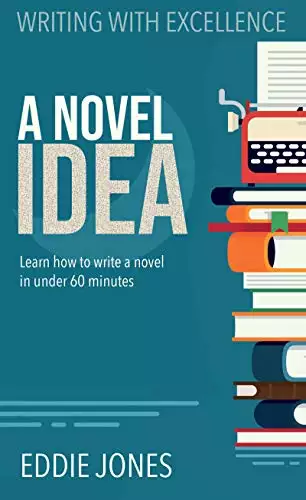
A Novel Idea
Buy now
Available in:
- eBook
- Paperback
Synopsis
In 60 minutes LEARN the basic elements of a novel. (Some reviewers were confused and thought they could buy this book and learn how to WRITE a novel in 60 minutes or less.)
A Novel Idea includes instructional materials, notes, and handouts from workshops taught by the author over the past 10 years at writers' conferences. The intent of this book is to PRESENT the basic elements of novel writing in UNDER 60 MINUTES. Regardless of your genre: mysteries, cozy mystery, detective novel, crime story, fantasy, thrillers, suspense, science fiction, New adult fiction, Young adult fiction, Children's literature or Children's books, Historical fiction, Women's fiction, Historical romance, or contemporary romance, the BASIC elements are the same: PLOT, DIALOGUE, SCENES, CHARACTER GROWTH. When your plot sags, dialogue drags, or scenes feel stale, pull out this book and re-read sections. Chances are, a quick review of the basics will help you see the holes in your story and inspire you to push on and finish!
Topics include:
How To Write Plot
We remember characters; we pitch plot. In this section you'll learn how to map your story using the "passage markers" that shape every story's journey. From introduction and motivation to your Lead's moment of maximum angst, you'll see how easy it is to develop a story that keeps your characters on the path to a confrontational climax.
How To Write Scenes!
Making a scene is as easy as: ABCD - Action, Backstory, Conflict, Decision. A good scene reveals information that moves the story forward (new goals, old secrets, hidden motives), shows conflict between characters (adds tension), deepens your characters' development, and creates suspense (introduces a new wrinkle that leaves the reader hanging). Learn the three keys to scene summary, how to create memorable moments in your story, and what four questions you should ask of each scene.
How To Write Dialogue
Dialogue can breathe life into any fiction or non-fiction story. In this section we examine what a scene is: Doing (Action), Thinking (Narrative), and Talking (Dialogue). Learn when to add tags, when to skip tags, and where to place tags. Explore the types of dialogue — Direct, Reflective, Misdirected, Modulated, Descriptive, Breathless, and Compressed.
How To Create Compelling Characters
Compelling characters are larger than life. They risk more, laugh often and love with passion. In this section you'll learn how to invent both likable and loathsome main characters, heroes and heroines, reflection, nemesis and supporting characters. Examine your Lead's motivation, focus on his or her flaws, and explore the feelings of your hero/heroine. You'll see how conflict, crisis, and consequences shape your characters.
How to Write Romance & Romantic Comedy
Romantic comedies are stories with light-hearted, humorous plots that demonstrate how true love can overcome all obstacles. In a typical romantic comedy, the two lovers tend to be young, likable, and apparently meant for each other, yet they are kept apart by complicating circumstances. A happy ending is always the result. Learn the basic story structure of romance and romantic comedies in less than ten minutes.
How to Write Cozy Mysteries
Despite changes within the book publishing industry, cozy mysteries remain popular. Cozy mysteries allow readers to fall in love with a quirky sleuth while at the same time solving a puzzle. Cozies avoid profanity, graphic violence, and overt sexual scenes. For readers, the payoff has less to do with “who done it” and more to do with “how the who done it.” Learn the basic story structure of cozy mysteries in less than ten minutes. Much of this information can also be adapted to general murder mysteries, suspense, and thrillers.
Release date: August 22, 2015
Publisher: Lighthouse Publishing of the Carolinas
Print pages: 100
* BingeBooks earns revenue from qualifying purchases as an Amazon Associate as well as from other retail partners.